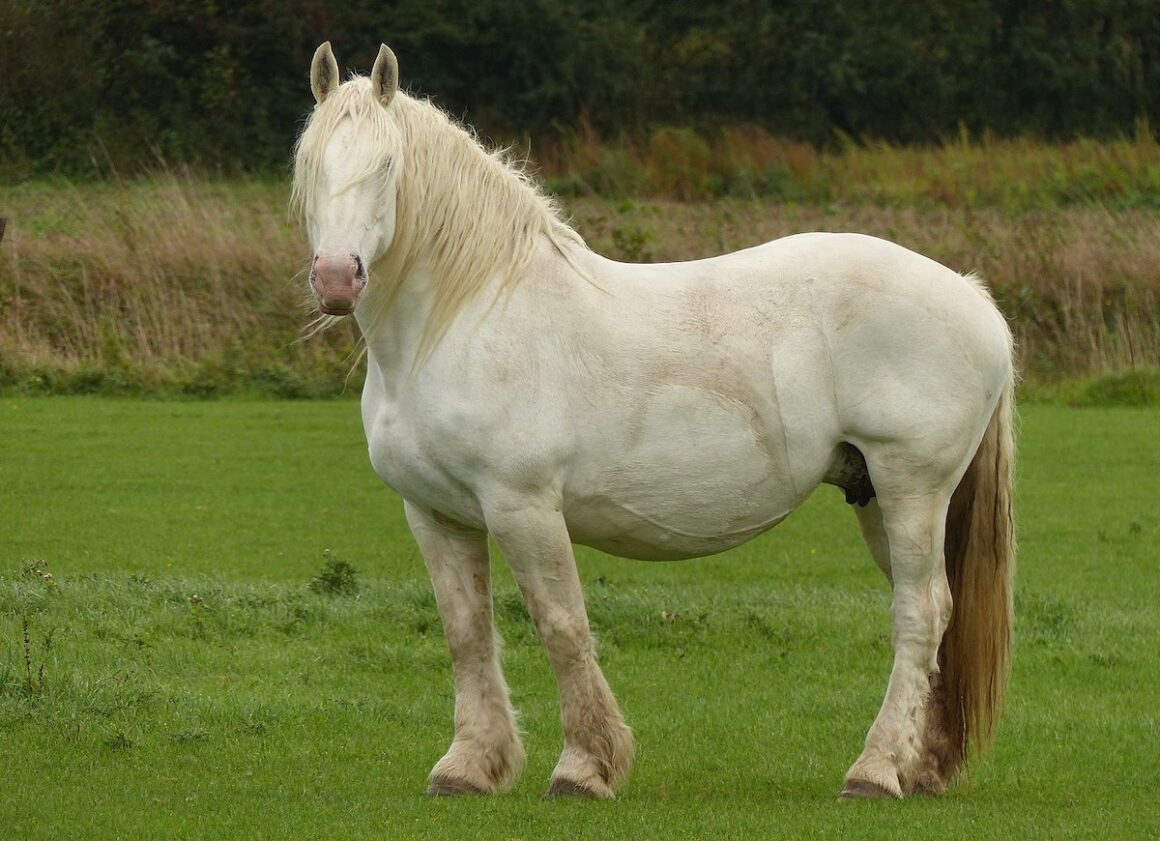The Boulonnais horse once dominated France with over 600,000 horses throughout the country before the start of World War I. Known as the white marble horse, they are agile heavy horses and lighter than Shires, making them noble and elegant workhorses in a variety of settings. Despite devastating losses to the breed population, they are holding on with a small but determined number of horses.

The Boulonnais horse is named for Boulogne, a fishing port on the north coast of France. Here, smaller members of the breed were used to pull carts of fresh fish to Paris. It was an arduous journey, but these beautiful horses were also tough, and somehow made the trip look easy. The Boulonnais is a large draft breed, and while not as tall as some, are stocky, with an elegance associated with lighter horse breeds. Their distinctive skin and coat earned them the nickname of the white marble horse, and their other qualities made them a beloved workhorses for centuries.
History of the Boulonnais Horse
The history of the Boulonnais horse is interwoven with the history of France. The breed started with horses that Julius Caesar brought when he used France as a staging point to invade England. Infusions of oriental bloodlines, including the Andalusian, helped create a unique draft breed. Further development coincided with the Crusades, which happened between 1095 and 1291. Soldiers crossed French stallions with German Mecklenberg mares to enhance the Boulonnais horse.
They were popular as Medieval war horses because of their size and strength with several breed sub-types. These subtypes were further developed in the 1600s when the Boulonnais was outcrossed with Arabians, Andalusians, and the Spanish Barb. Breeders wanted to modernize their horses.
They were popular in Boulogne, pulling fish into Paris. This is a 200-mile journey, and the Boulonnais made the trip in under 18 hours. Larger sub-types were used for draft work in farms and cities. Many other draft breeds also benefitted from outcrosses to the Boulonnais horse. Imports to the United States in the early 1900s proved very popular, and large numbers of horses made the ocean passage, where they were lumped together with other French breeds and largely absorbed into the Percheron registry. This practice was later stopped.
Breed Characteristics
The Boulonnais horse is an elegant draft breed and has many of the same qualities as the Percheron and other Medieval war horse breeds, but they are also distinct. The average height is between 14.3 and 16.3 hands. The head is short and elegant, with a short, muscular neck as well. They have round and muscular bodies overall, and shorter legs than other draft breeds, which is seen in their overall shorter height too.
They are more elegant and noble looking than other draft breeds and have delicate features. Their skin is also fine, with the veins showing through. Grey is the most popular color, and with the veins visible, they earned the nickname the white marble horse. Chestnuts and blacks are also allowed by the breed registry.
Boulonnais gaits are just as elegant and lively as their appearance. They are also fast, with excellent endurance, a trait they first earned a reputation for with their fish routes and have maintained.
The breed’s liveliness and energy are balanced out with a kind temperament and a willing heart that wants to please people. Beginners and experienced horse people can easily work with the breed.
Predominantly Grey
Grey was not always the most popular color for Boulonnais horses. A survey in 1778 found black and dark bay was in the majority. Grey horses first appeared in the early 1800s. But the breed played an important role in Boulogne, hauling fish to Paris and other locations. This work happened partly at night, and grey horses are easier to see in the dark.
Naturally, the grey color started making horses more valuable, and breeders prioritized it. Many referred to the Boulonnais color as the appearance of clouds on the coast. Chestnuts and blacks regained some popularity in the later 1900s and are more common today.
Boulonnais Horses Today
The breed population was critically low after World Wars I and II and the displacement of horses thanks to mechanization. In 2016, estimates were that 1,000 members of the Boulonnais breed remained, mostly in France, near the border with Belgium. They are maintained on state-owned stud farms to preserve the breed. There are a few that were imported to the United Kingdom too, and a breed preservation society is working to support them. The United States also has a breed association, working to import and preserve the breed.
In France, they are also regaining popularity, with the police adding them to the ranks of their mounted patrol units. They are also popular for pleasure driving and riding horses and some teams work in tourism or other industries. While the Boulonnais horse still has critical status, their future is brighter than it once was.
Sources: L’Energie Cheval, International Museum of the Horse, American Boulonnais Horse Association, Native Breed, FAO, and Horse & Hound.
